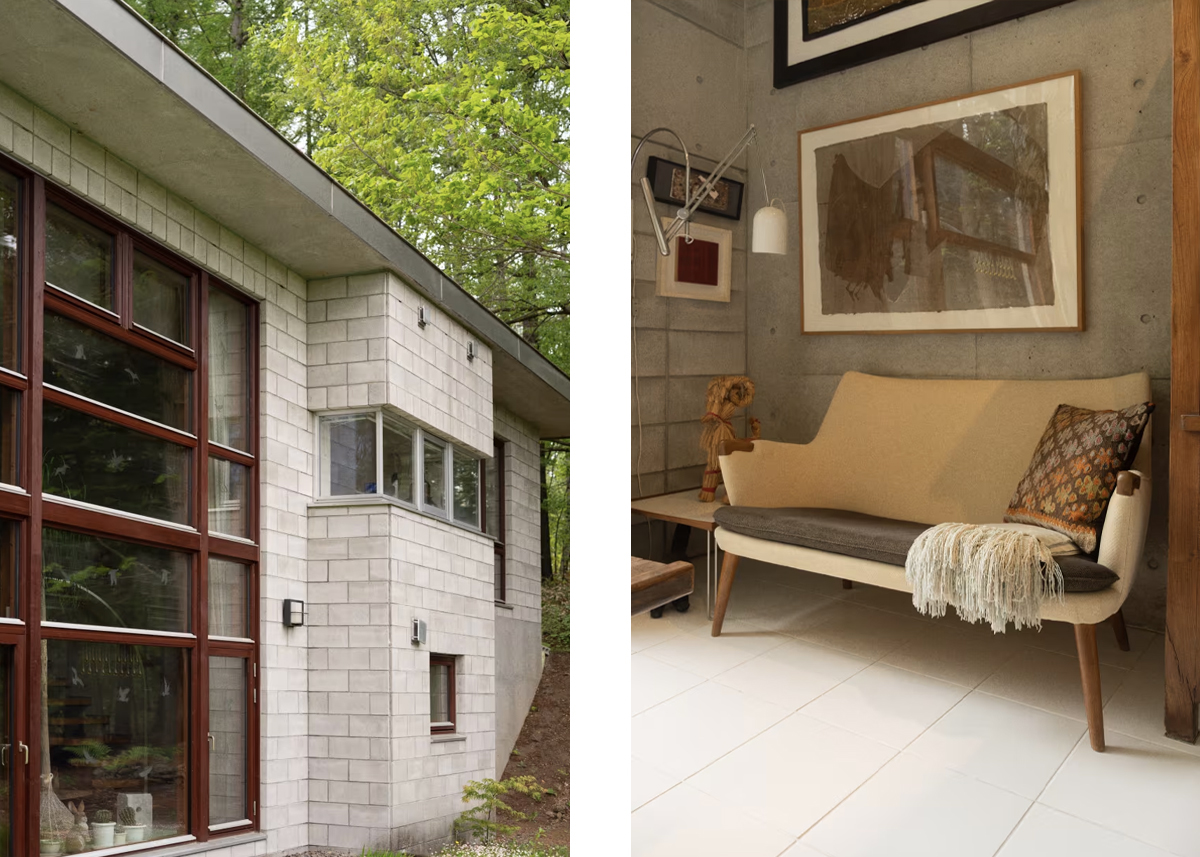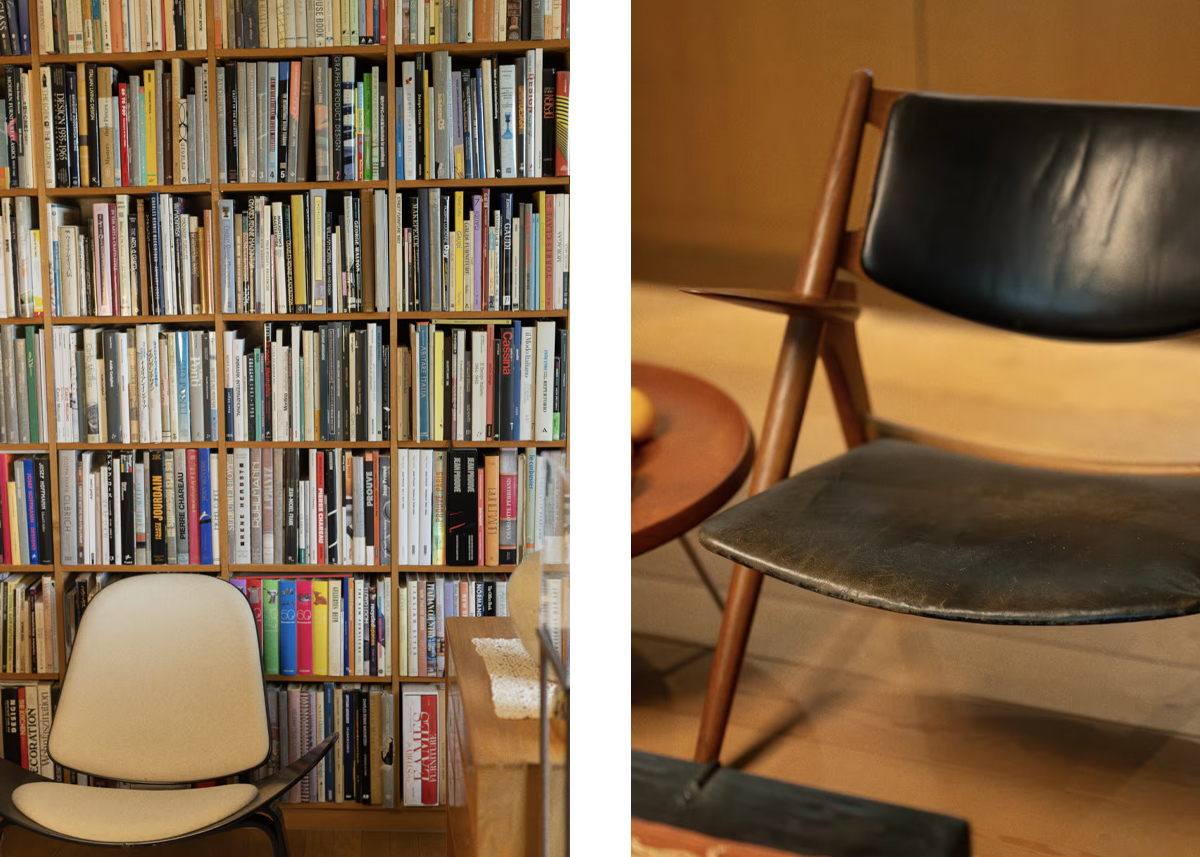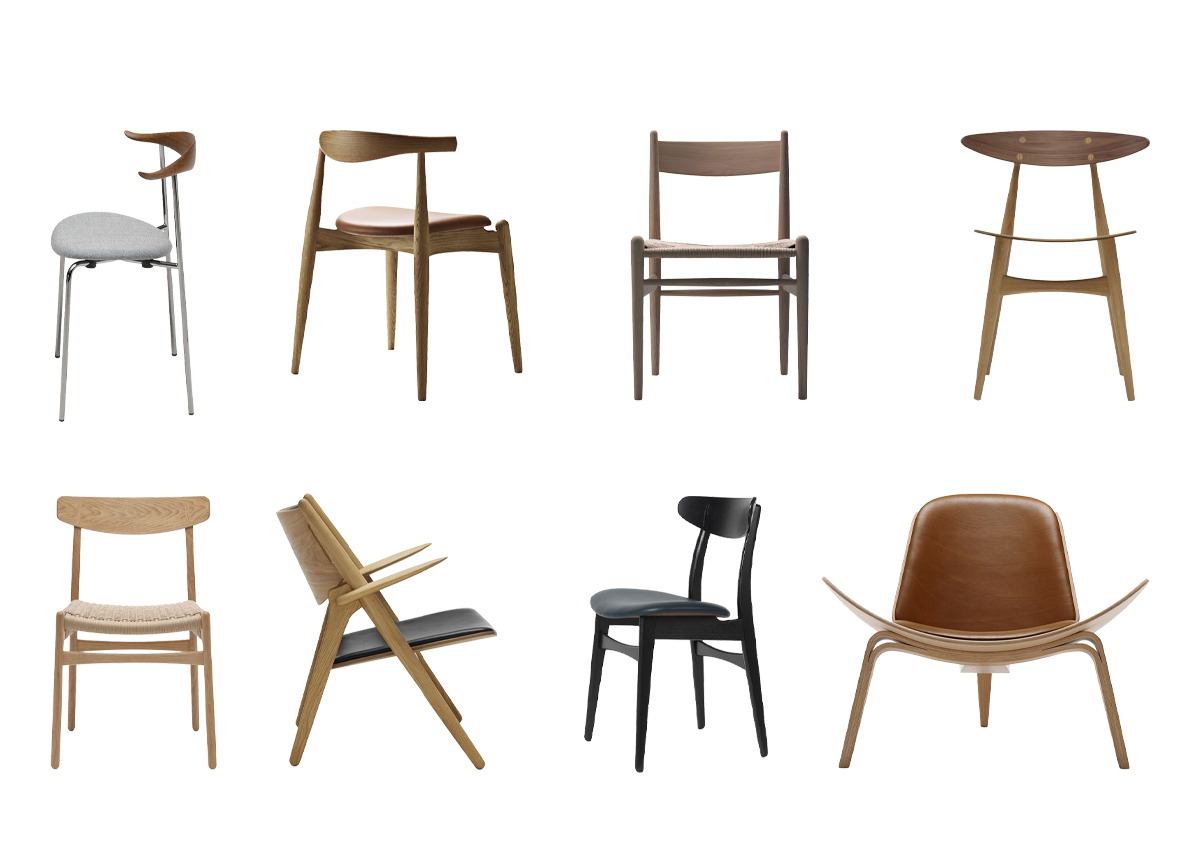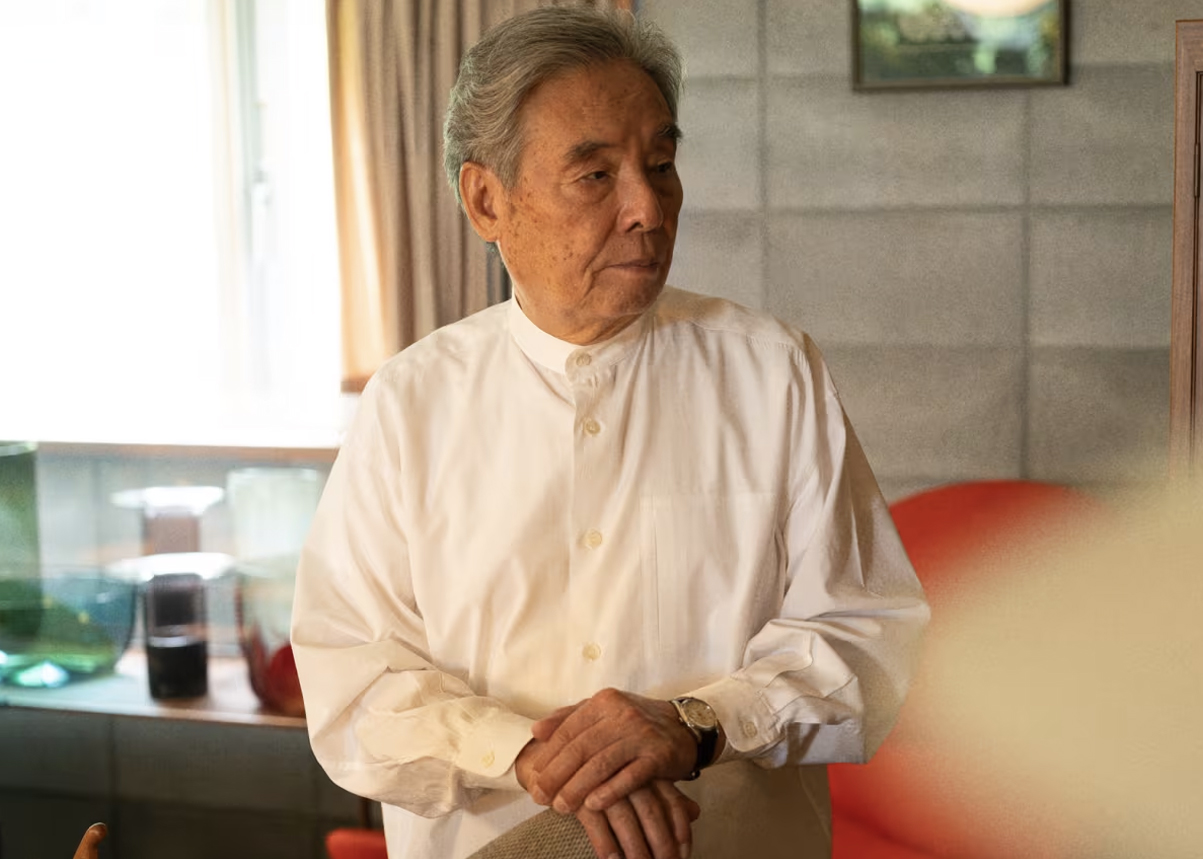Take A Seat With The Chair Man
Inside The Collection of Noritsugu Oda, the man of a thousand chairs.
2024 marks the 110th anniversary of the birth of Hans J. Wegner, one of the key figures in mid-century Danish design. To mark this momentous occasion Carl Hansen & Son, the company with which Wegner is most closely associated, has commissioned a number of interviews with a series of makers, thinkers and creators who cite Wegner as a major inspiration, and below we present an excerpt from an article made with Noritsuga Oda, a Japanese furniture collector affectionately known as “Chair Man”, due to his extensive collection of classic chairs. A lecturer and researcher, Oda’s collection contains over 1350 chairs, with his home a living tribute to the beauty of mid-century and modernist design. He has won a number of awards for his work, including the Danish Furniture Award, and in 2015 Oda was awarded The 1st Hans J. Wegner Award in celebration of his impressive collection.
Below is an interview with Noritsugu Oda originally posted by Carl Hansen & Son as part of a series of home visits that were made to pay tribute to Wegner on the occasion of his 110th anniversary.

You are a chair researcher, quite a niche profession. What is the story behind that title?
In Japan, chairs began to appear in ordinary houses around 1955, but when I was born in 1946 just after The Pacific War, there was not even one chair in my house. I remember sitting on a chair in the classroom for the first time when I entered elementary school. The reason why I was so interested in chairs is because, if you look up the word "chair" in the dictionary, it has two meanings: the physical meaning of being the main axis that supports the body, and the very spiritual, abstract meaning of representing status. To represent that status, the head of an organisation is called the "chairman", and when one enters an organisation, one aims for a higher position (seat) in order to become a senior executive or eventually a manager. This deep-seated desire in the human psyche takes shape in chairs. I believe this is the reason why many people are attracted to chairs.

In which ways do you see similarities between the danish and the Japanese design heritage and expression?
In terms of craftsmanship, Danish and Japanese craftsmanship have much in common, especially in terms of aesthetics. Japanese people value modesty and simplicity, which we very much have in common with Scandinavians. Even in the manufacturing process there are commonalities, such as how to make the most of a material’s natural characteristics and how to simplify the form as much as possible. The same can be said for craftsmanship, where highly skilled craftsmen are greatly valued. Going back as far as the period of Japonisme (the predilection for things Japanese that became popular in Europe in the late 19th century), Japanese culture, arts, and traditional crafts also had a great influence on the Scandinavian countries. In this regard, Denmark and Japan have always had a deep mutual affection for one another.
You have exhibited your private collection of Wegner chairs and have written several publications on Wegner. How was your personal relationship with Wegner?
Being “just” a researcher who collects information, I have always told myself not to cross any lines. However, after Mr. Wegner gave me his acknowledgement, he took me to places that were off-limits to the regular interviewer. We even had meals in his home together. I also had the opportunity to ride in the back of Wegner’s car as he drove us to his village, which was a great time for me.

What is an outstanding chair to you?
The chairs designed by Wegner hit the sweet spot from the moment you sit on them. They are truly well-made. At the same time, the proportions are beautiful - functionally beautiful. Wegner’s greatest wish was using machines to make pieces with uniformly consistent proportions and functionality, available to everyone at as affordable a price as possible. In this regard, Wegner had the same aspiration as Børge Mogensen’s “chairs for the people,” and he always took pride in the fact that he was a furniture craftsman before being a designer. When I sit in his chairs, I really feel Wegner’s human qualities. A chair is the item that most readily expresses the artist’s personality and human qualities.
A good chair asks us to behave well.
Featured in Noritsugu Oda's home.

- Carl Hansen CH28 Lounge Chair - Here
- Carl Hansen CH07 Shell Chair - Here
- Carl Hansen CH72 Lounge Sofa - Here
- Carl Hansen CH20 Elbow Dining Chair - Here
- Carl Hansen CH30 Dining Chair - Here
- Carl Hansen CH33T Dining Chair - Here
- Carl Hansen 23 Dining Chair - Here
- Carl Hansen CH36 Dining Chair - Here
- Carl Hansen CH88P Upholstered Dining Chair - Here
-
TrendingThe 'Severance' location built by a Frank Lloyd Wright protégéRead More
Audiences of hit Apple TV series 'Severance' have been in awe of Devon & Ricken's mid century modern home. Severance has captivated audiences with its sharp writing, stellar performances, and haunting musical score, but its meticulously designed sets and striking...
-
Iconic HomesTake A Seat With The Chair ManRead More
Inside The Collection of Noritsugu Oda, the man of a thousand chairs. 2024 marks the 110th anniversary of the birth of Hans J. Wegner, one of the key figures in mid-century Danish design. To mark this momentous occasion Carl Hansen...


